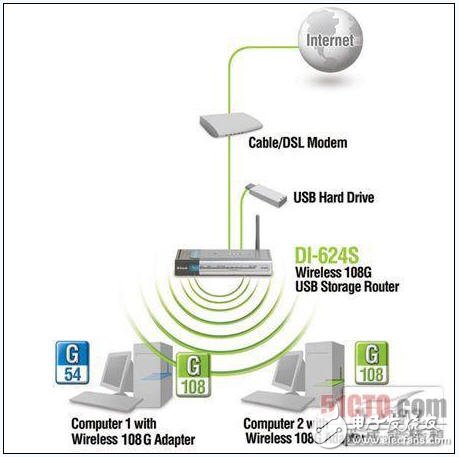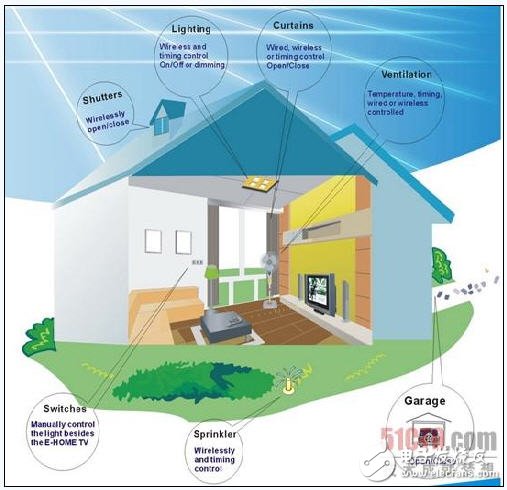This article mainly introduces to you in detail what new technical projects are available for wireless routing technology. This article mainly introduces you to several people. I believe everyone has seen this article helpful to you.
The development of wireless technology has been ebb and flow, and many technologies have been gradually reduced. The new wireless technology has captured more people's attention. Follow this article to take you through the wireless technology projects that are now red to hot. I hope that the content of this article will let you know the current trends in technology.
1. A better way to provide urban wireless services
For some time, many high-profile Wi-Fi city projects have failed. The industry is rethinking and wants to understand alternatives that can provide broadband access to the city. Researchers at the University of Cambridge and the Massachusetts Institute of Technology in the United States say the secret of success may be to use Wi-Fi access points that are already ubiquitous in many cities and to make these access points a dense network.
The researchers presented an idea in a paper titled "Building Wi-Fi Access in the Ubiquitous Region of the City," allowing current and future personal Wi-Fi network owners to agree to legitimate user access, accessors. The transport stream will be transported securely over the network and will not require the owner to take responsibility for it. The researchers said: "We propose this economically viable option to replace the practice of investing millions of dollars in new infrastructure."
The article said: "We believe that ubiquitous Wi-Fi access in the city can be built at near zero cost. Because the network infrastructure already exists, most city dwellers have broadband connections and personal wireless at home. AP. In addition, the researchers also recommended the establishment of an organization of trusted Wi-Fi access points that can deploy gateways and servers to ensure the security of the entire dense network.
2. Treat wireless networks differently than wired
The debate about whether to use wired or wireless networks is still in the air, but the following debate may be little known—whether it is using old-fashioned wired network technology to support wireless networks or a new architecture specifically for wireless networks. In a paper published in September by MIT researchers Sachin KatTI and Dina Katabi entitled "MIXIT: Network encounters wireless channels," both scholars' research showed support for the latter's attitude.
The two researchers claim that their solution (MIXIT) supports wireless broadcasting, using space and time diversity, based on the inherent characteristics of wireless media to improve network throughput (compared to the most advanced random routing scheme, can be throughput The amount is increased by four times). In addition, random routing faces a problem in that even a few bits of erroneous transmission may drop the entire packet. They said that these random routing schemes work well in wired networks, but not in wireless networks.
3. Seek more energy efficient sensor networks
Network delays are not a bad thing. Three researchers at the University of California at Berkeley say beauty is in the midst of delays—you need to wait for those connected sensors until they can send the data back to the program or person who needs access to the data. However, this delay will not be satisfactory to users of all sensor networks, such as those relying on polling and schedule protocols.
In an article entitled "Procrastination may lead to longer, more useful lives," the researchers acknowledged that for improving the energy efficiency of sensor networks, a lot of attention has been paid to improved operating systems and storage. And the use of communication equipment. Their research focuses on reducing synchronization costs and leveraging batch data and compression without affecting system users. While discovering that delayed communication may have some benefits, they also found the challenges of the network, such as how to establish a routing solution immediately after the sensor was woken up.
4. DARPA's Adaptive Battlefield Wireless Program
DARPA is the US Defense Advanced Research Projects Agency, a new research project at the agency that is experimenting with state-of-the-art wireless technology to build tactical radio networks that can adaptively keep soldiers connected on the battlefield.
The project, called WAND (Wireless Adaptive Network Development), will replace commercial radio components with custom radio components and utilize a variety of software technologies and algorithms (many of which are just mature). A large-scale peer-to-peer network can be formed by some $500 walkie-talkie-sized radios. It is reported that this kind of network can change the frequency and avoid interference, and cope with various events that may damage wireless communication. WAND is an attempt to build low-cost radios using intelligent network software that makes communications ubiquitous on the battlefield and more efficient and reliable.
5. The safety architecture for emergency personnel is surfaced
Finally, look at a wireless research project for medical emergencies. Researchers at Princeton University say they have come up with a new way to safely deliver critical rescue information to emergency responders (in response to natural disasters and terrorist attacks).
This new architecture supports what Ruby Lee, a professor of electrical engineering at Princeton University, calls "instantaneous trust," the ability to safely exchange sensitive data such as floor plans or personal medical information for buildings as needed. Lee, who now leads the Princeton Multimedia and Security Architecture Lab (PALMS), has previously worked as an HP computer designer. Lee and graduate student Jeffrey Dwoskin wrote a paper titled "Hardware-Level Trust and Instant Trust for Secure Key Management." This article describes devices such as handheld computers used by first-aiders, through which elements such as "device root keys" and "storage root hashes" can be used to provide temporary access to information.
Best Budget I7 Laptop is everyone eager to. Laptop Intel Core i7 is the No. 1 processor clients choose when they are searching for a performance Gaming Laptop,cause it`s of excellent powering, bigger Solid State Drive, usually 512GB based, full HD 16:9 aspect ratio slimmer display bezels, bigger battery-12000mAh-no need to worry lack of power, fingerprint reader, backlight keyboard, etc. What is intel Core I7 Laptop Price? Usually 300-400usd. You can get Intel i7 11th Generation Laptop, Intel i7 10th Generation Laptop, Intel I5 11th Generation Laptop, Laptop I3 11th Generation,etc. 15.6 or 14 inch all available for i7 processor.
Cooperating with us, you just need to share all your requirements details, like size, cpu, ram, rom, battery, fingerprint, backlight, enter button numbers, SSD+HDD or only SSD ok, if need oem service, if need logo position, special apps preinstall if need, etc. Can provide matched and value feedback in 1-2 working days.
The reason why clients choose us is that just half of DOA than others, longer warranty time, smaller MOQ, fast delivery, competitive cost, good after-sale service, etc.
Laptop Intel Core I7,Intel Core I7 Laptop Price,Best Budget I7 Laptop,Intel I7 11th Generation Laptop,Intel I7 10th Generation Laptop
Henan Shuyi Electronics Co., Ltd. , https://www.shuyielectronics.com